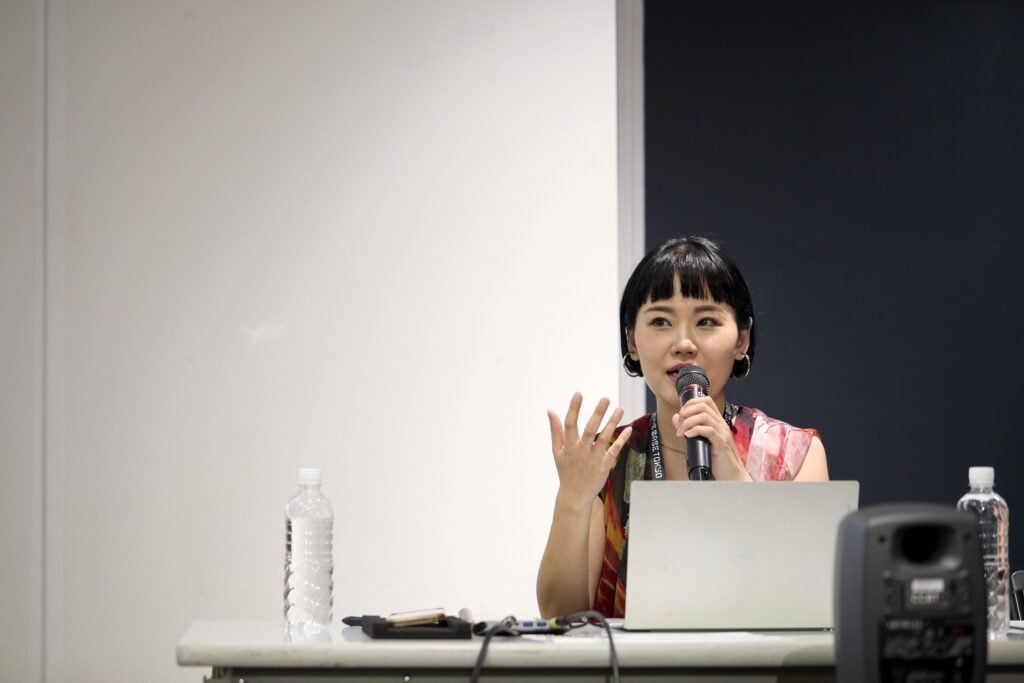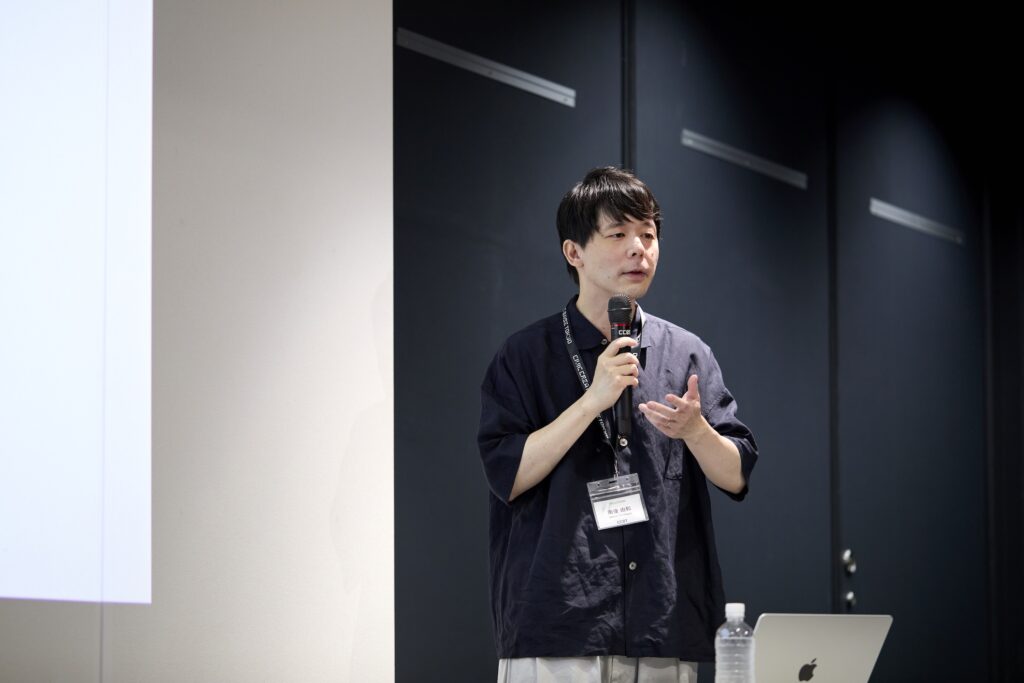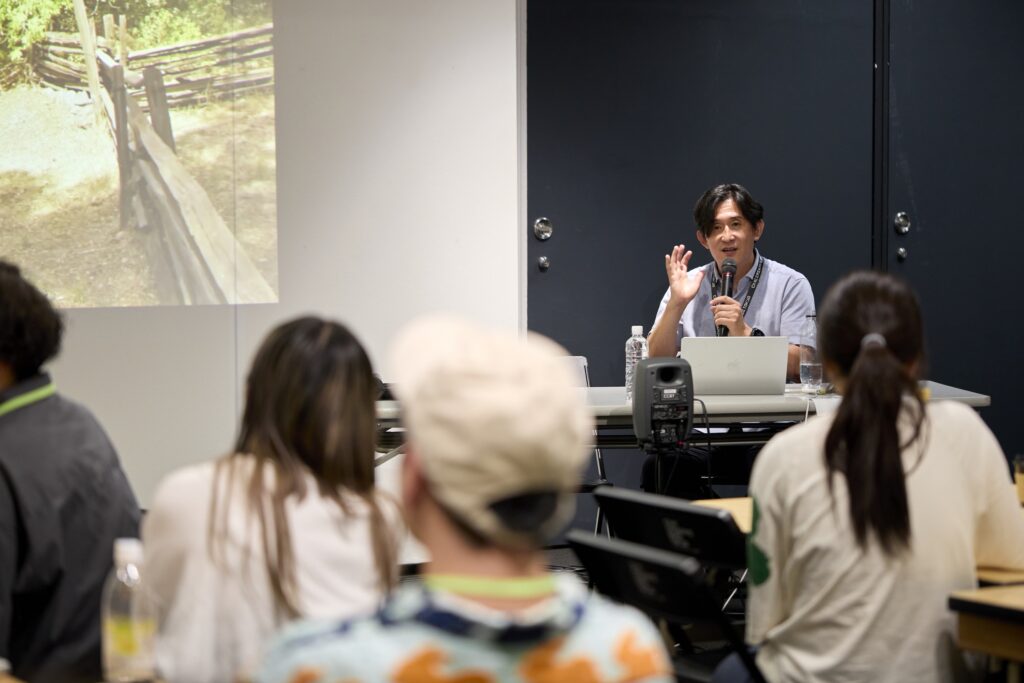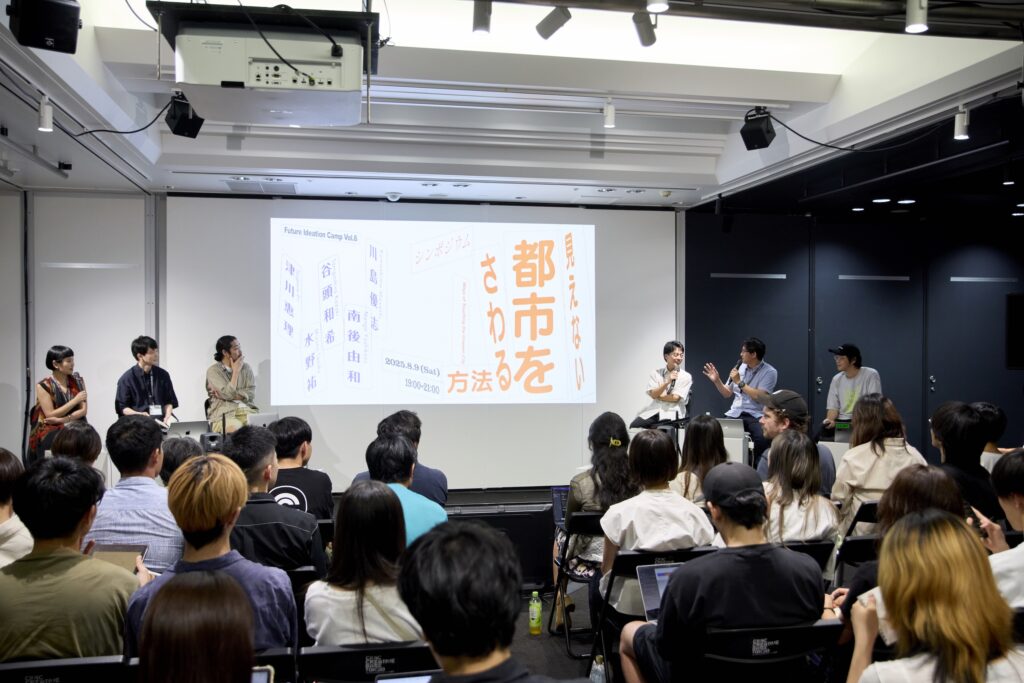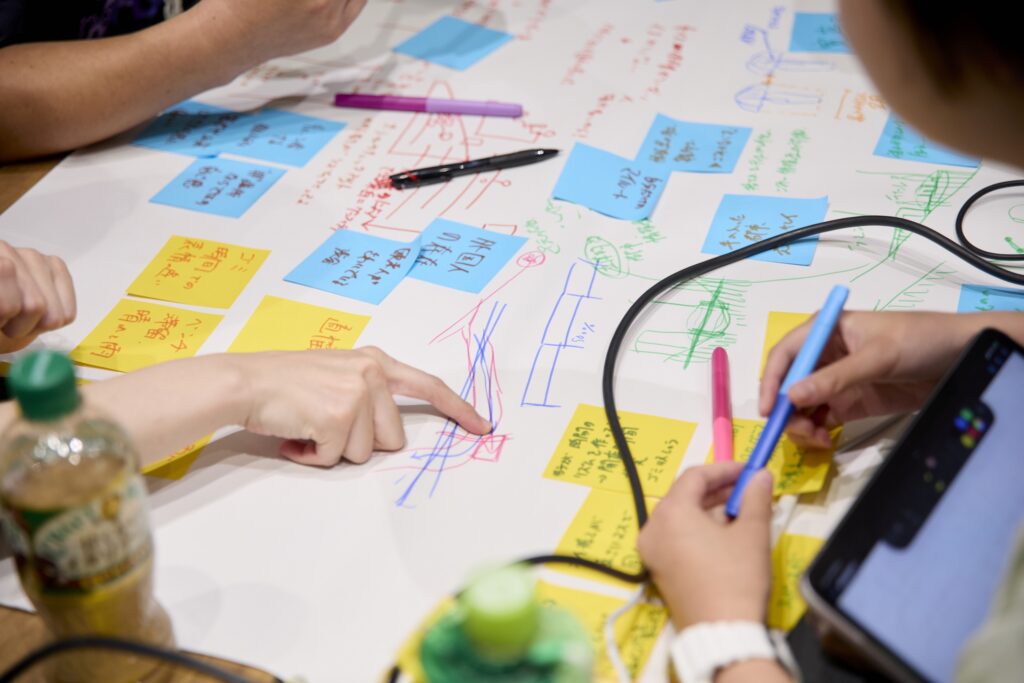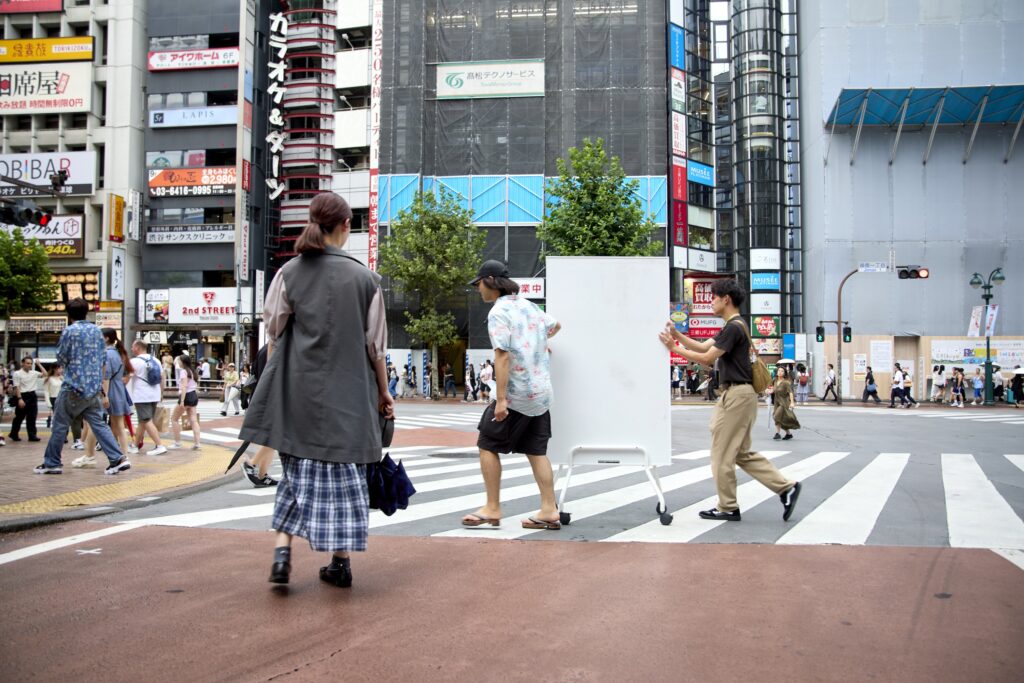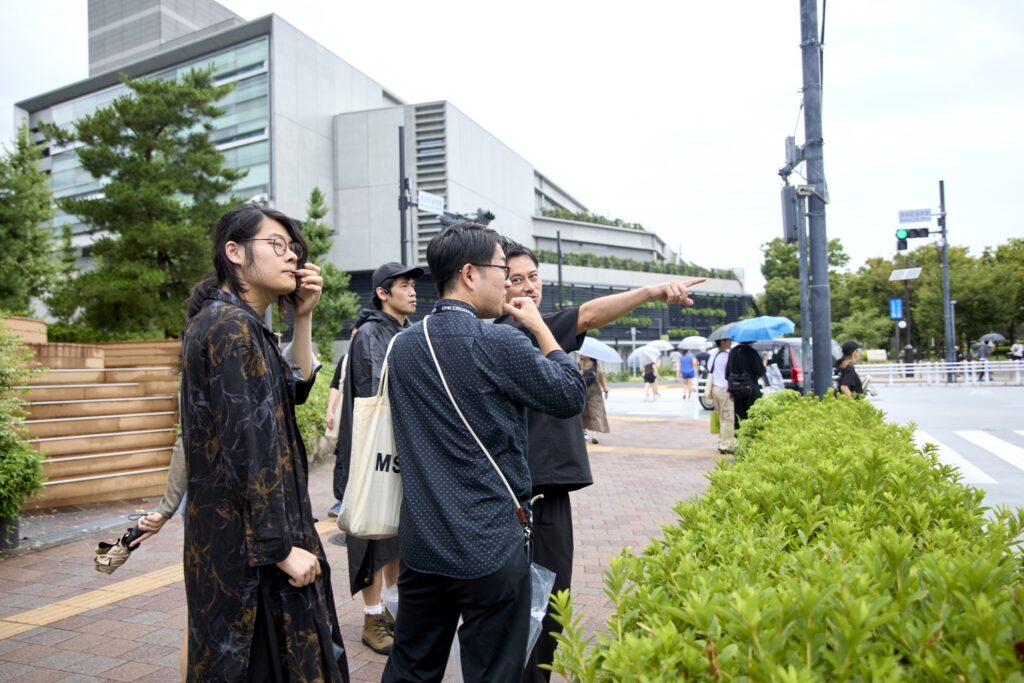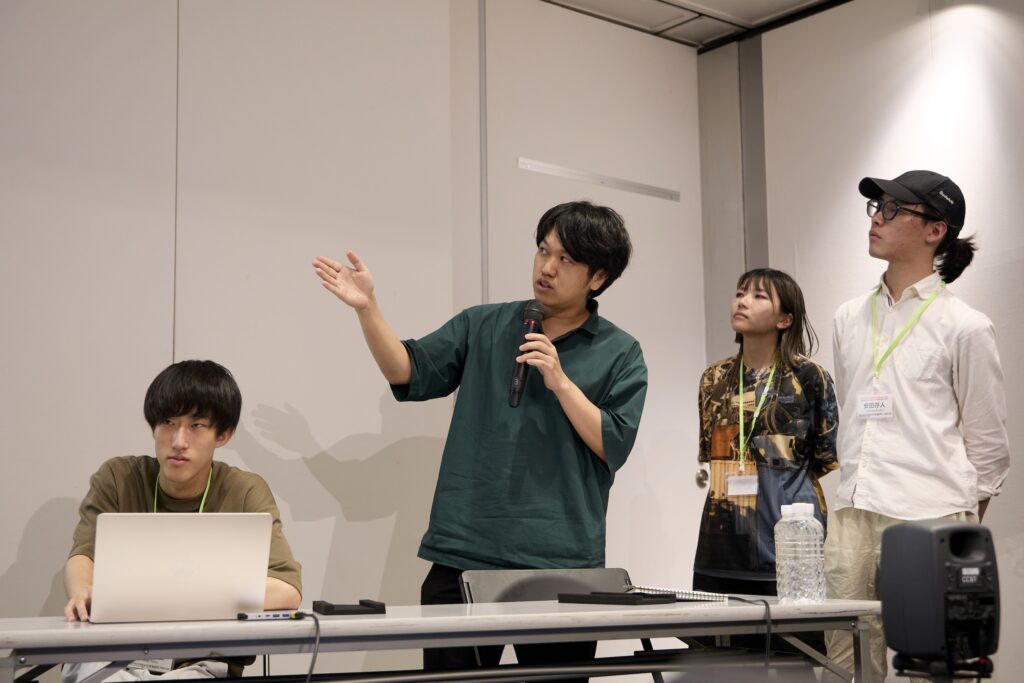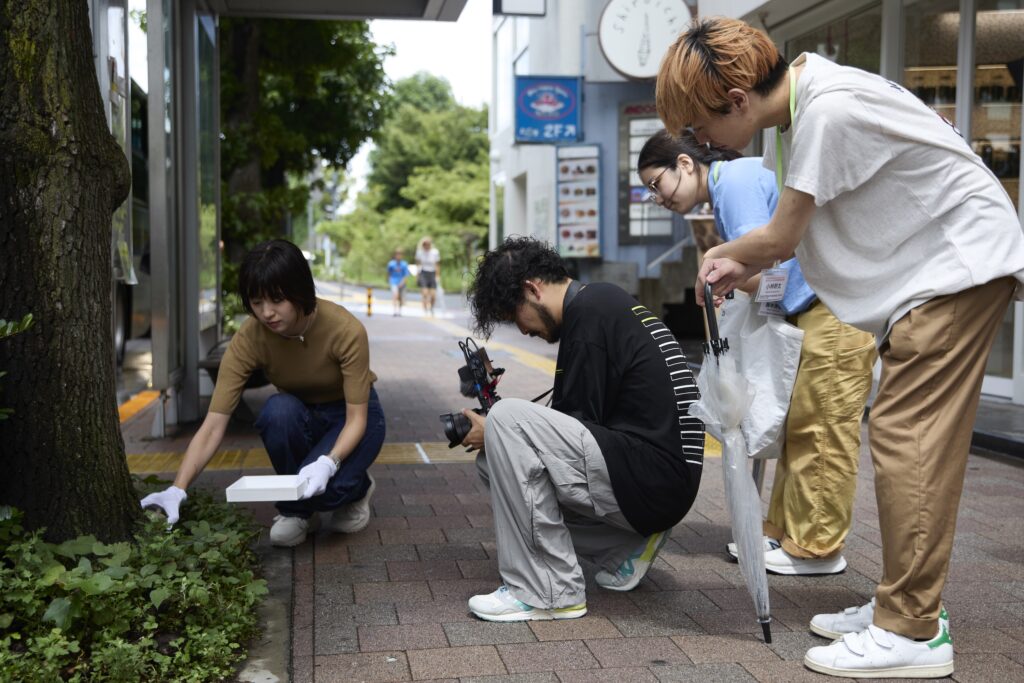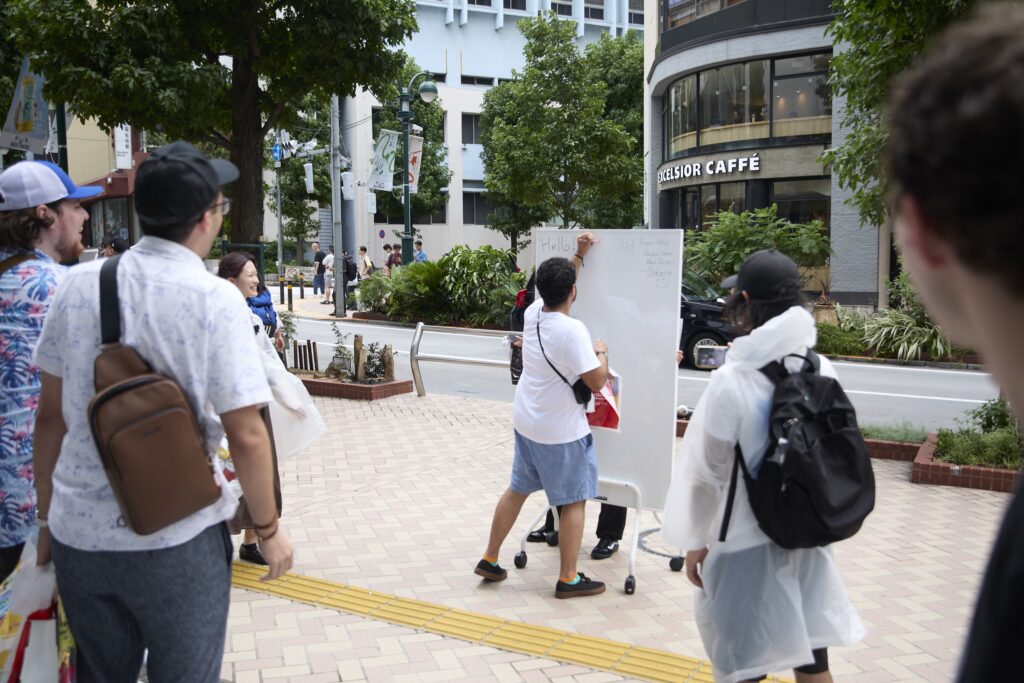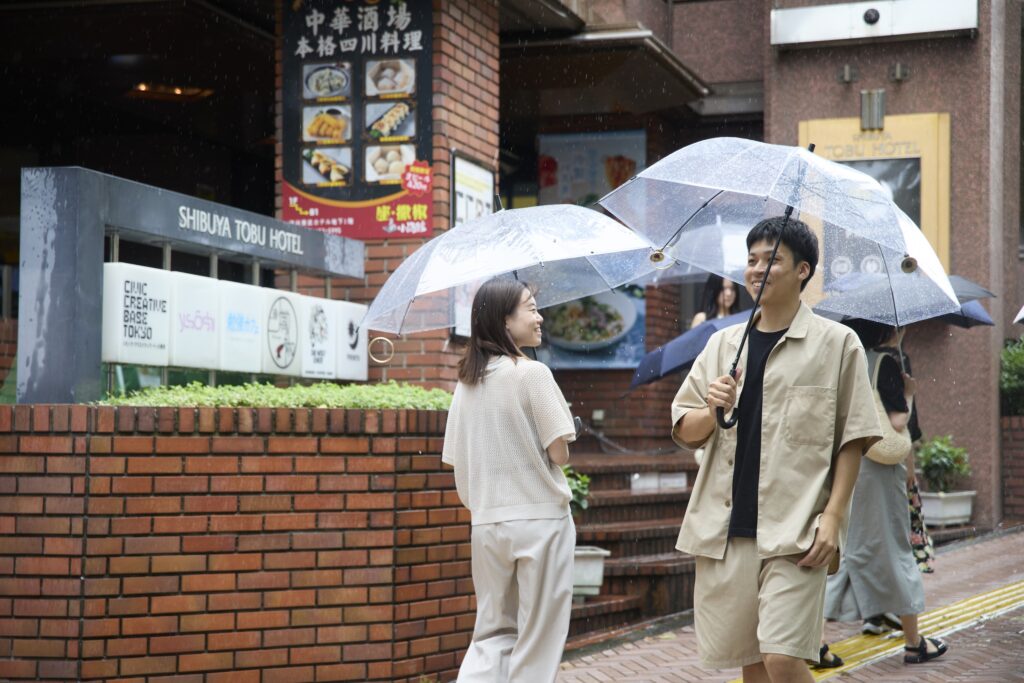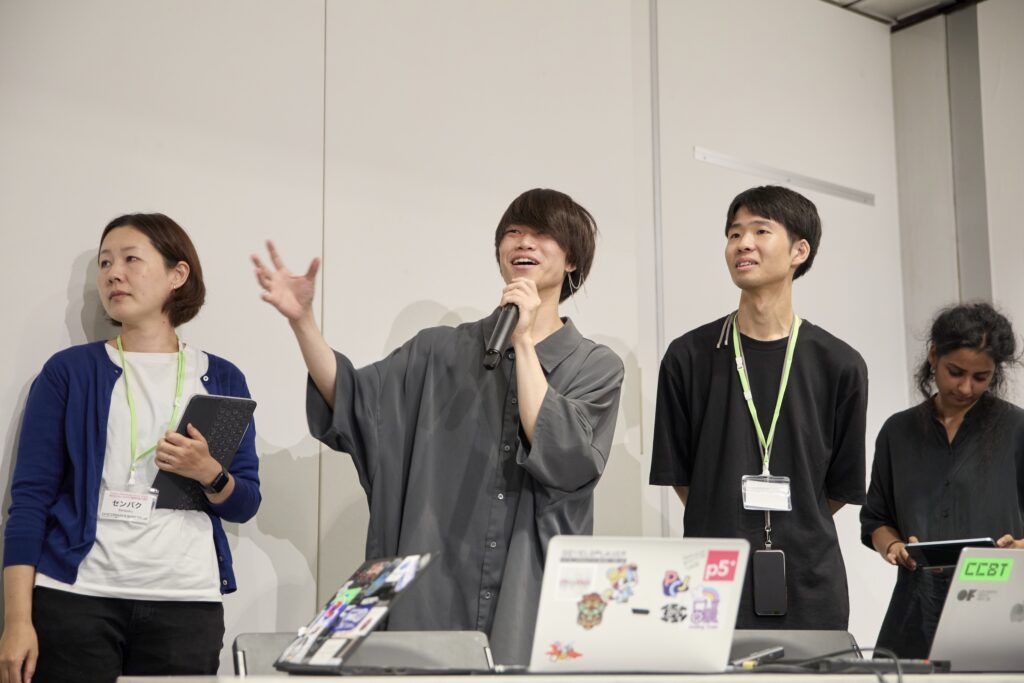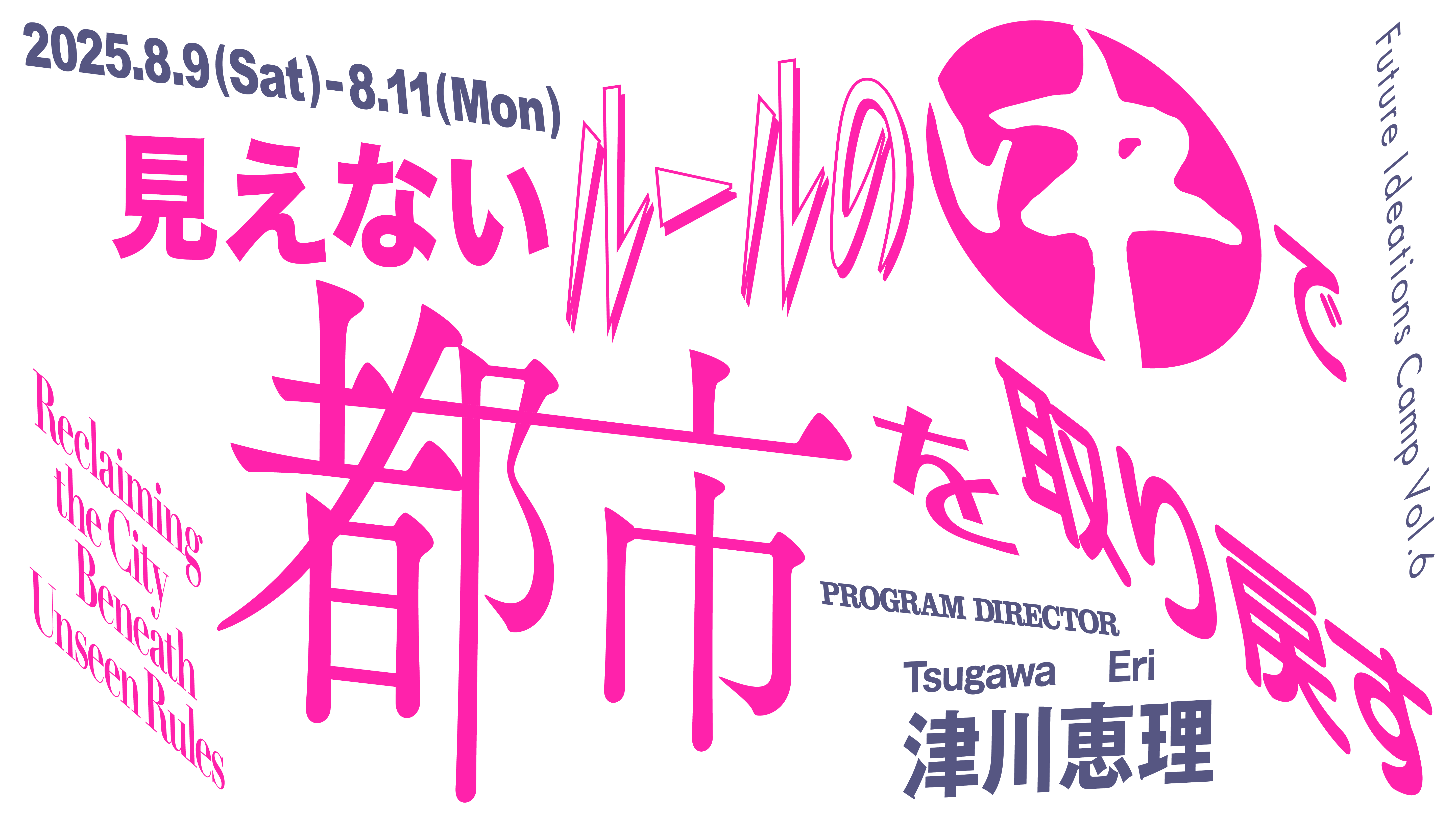
Between Public Spaces and Myself: Negotiating the Commons
DAY 1
2025.8.9
・Camp Introduction
・Participants’ Self-introductions
- 【Lecture 1】The Weaving Body: Bodies between Intentions and the Public Space
Lecturer: Tsugawa Eri (Architect / Director, ALTEMY) - 【Lecture 2】 Shaping Cities through Urban Literacy
Lecturer: Nango Yoshikazu (Sociologist / Professor, Faculty of Engineering and Design, Hosei University) - 【Lecture 3】The world is not what it seems
Lecturer: Kawashima Masashi (Vice President, Niantic Spatial, Inc.) - 【Symposium】Ways of Touching the Unseen City
Panel:
Tsugawa Eri (Architect / Director, ALTEMY)
Nango Yoshikazu (Sociologist / Professor, Faculty of Engineering and Design, Hosei University)
Tasuku Mizuno (Attorney at Law, City Lights Law)
Tanigashira Kazuki (Urban Journalist, Chain Stores Researcher)
Kawashima Masashi (Vice President, Niantic Spatial, Inc.)
Drawing from CCBT’s theme for 2025, “The Future of Commons,” the 6th iteration of the Camp addressed the relationship between the city and the individual. Over the course of three days, participants will explore ways that individuals can “reclaim the city.”
This time, we saw the largest number of applications to date, bringing together 24 participants from diverse backgrounds, from students to working professionals.
The program opened with an overview by architect and Camp Director Tsugawa Eri. For this edition, the designated site for fieldwork and ideation was Shibuya Kо̄en-dо̄ri, the street where CCBT is located: a fitting choice to ground broad and abstract notions such as “commons” and “the city” into a more tangible setting. Tsugawa also reminded participants of the intricate power dynamics that are at play between public spaces and how creators intend those spaces to be used. She emphasized it was important that they do not to simply “make art about cities” but to first focus on “how one engages with others” in the public space.
Self-introductions followed, with each participant giving one-minute slide presentations describing their work(s) or research. With that, the morning wrapped up, and the afternoon sessions began with three lectures.
Tsugawa began as the first lecturer, tracing her career—from working at Diller Scofidio + Renfro, to founding ALTEMY, and to her current projects—and reflecting on the trajectory of how her small, personal curiosities evolved into larger public initiatives. One of her core explorations is on how individual behaviors manifest within cities—i.e. how micro-level cultures are made in macro-level urban spaces—and, as an example of this, she presented her design for the square in front of Sannomiya station in Kobe and the proposal she submitted for the Shibuya Park Ave. 2040 Design Competition. From these instances, she demonstrated how temporary interventions can gradually grow in scale and, moreover, reveal just how diverse human behavior can be in public spaces.
The second lecturer was sociologist and author of The Urban Theory of Solitary Spaces, Nango Yoshikazu. Referencing Henri Lefebvre’s critique of seemingly “neutral” spaces, Nango introduced the genealogy of urban sociology that was critical of the notion that [urban] spaces are neutral and unbiased. As an example of this interpretation, he mentioned the Situationist International’s artistic interventions in cityscapes. With this idea of “reading and writing” [in] cities, Nango moved the discussion to the transformation of Shibuya from the 1960s to the present, highlighting the Scramble Crossing as an example of a localized (re)staging that, driven by social media, increasingly allowed users to post Shibuya as a “virtual material.” Shibuya had now turned into backgrounds for users’ online spaces.
The final lecturer, Kawashima Yuji of Niantic was the mastermind behind Ingress and Pokémon GO. Introducing the initiatives by users/players, he discussed the ways our real, tangible world was expanded by games that use AR technology. Kawashima proposed that with digital technology and “seeing the world with a new set of eyes,” we can rediscover aspects in our reality that we have overlooked and/or forgotten. He also introduced Niantic Spatial Inc., freshly launched in 2025, and shared its mission to advance the use of spatial computing, build large-scale geospatial models, and deepen the understanding(s) of the world for both humans and machines.
To close Day 1, a symposium brought together the three lecturers along with lawyer Mizuno Tasuku and urban journalist Tanigashira Kazuki. Presentations and discussions ranged widely—from the transformation of Miyashita Kо̄en to MIYASHITA PARK, to the physicality of graffiti writers vis-à-vis the many surfaces in the cities, and to how, in Japan, the “communal” aspects of a city often emerged out in the streets instead of in the city squares. The lively exchanges made this first day a valuable opportunity to deepen our understanding of “cities” and “commons” and, moreover, to reflect on how individuals can meaningfully engage with public spaces.
Group Work & Feedback
DAY 2
2025.8.10
- World Cafe
- Group Work
Facilitators: Tsugawa Eri, Kawashima Masashi, Otsuki Shuto, Kihara Tomo, Konishi Takahito, Sugita Mariko, Tomura Yo, Miyauchi Yasuno, Sakai Eisaku, Inada Shumpei(CCBT) - Progress Report & Feedback
The second day began under an unfortunate morning rain. The program shifted into the practical phase where the 26 participants were first divided into six groups and then allocated a facilitator each to lightly guide them through their ideation later in the day.
First, a World Cafe session to break the ice and get participants discussing candidly. Participants rotated between 6 tables at 10-minute intervals, discussing their ideas that arose from discussions from the day prior. Post-it notes and larger sheets of paper were placed on the tables for participants to freely jot down ideas and words that stuck out to them. Among the many that were written were “ame [rain],” reflecting the day’s weather, as well as other terms and ideas that had appeared often from the day before such as “kо̄en [park]” and “hiroba [square].” Despite having met for the first time, the participants actively exchanged their ideas, resulting in a warm but vigorous back-and-forth.
After a lunch break, the participants returned to their groups to begin working on their ideation and exhibit. They were now expected to narrow down their ideas into a topic and plan out how to best demonstrate the issue(s) they wish to address and decide how they wish to exhibit it.
One group that went straight into fieldwork was made aware of the “boundaries” that existed between buildings and roads, creating a scannography along the line that surrounded PARCO. Soon after, other groups also ventured out, observing and analyzing Shibuya Kо̄en-dо̄ri from unique perspectives and terms in mind such as “kasa [umbrellas],” “ajiwai [savor or (aesthetic) character],” and “teiten-kamera [fixed-point cameras].”
In the evening, it was time for the progress report where Camp Director Tsugawa, yesterday’s lecturer Kawashima, and other facilitators joined to provide feedback. The ideas presented were: 1) research on abandoned plastic umbrellas, 2) re-shaping the boundaries of sonic experiences, 3) installing whiteboards as open spaces, 4) creating spaces to eat bento boxes, 5) designing a shrine dedicated to washed-up objects for visitors to pay homage to, and 6) making recipes for savoring/appreciating the city. As Tsugawa, Kawashima, and the facilitators gave constructive feedback, the groups were now tasked with the challenge of planning how to materialize these unique ideas into presentable exhibits.
Group Work & Progress Report
DAY 3
2025.8.11
- Group Work
Facilitators: Tsugawa Eri, Otsuki Shuto, Kihara Tomo, Konishi Takahito, Sugita Mariko, Tomura Yo, Miyauchi Yasuno, Sakai Eisaku, Inada Shumpei(CCBT) - Progress Report
The third and final day. Full steam ahead for everyone as they continued to finalize their projects and prepare for the presentation and exhibit. Bubbling “there’s so much to do,” each group rushed to continue their fieldwork on Koen-dori and then scrambled to the stores to grab the necessary components for their works.
The afternoon began with final presentations–each group explaining improvements made based on feedback from the day prior and demonstrating how they plan to exhibit their work. The groups each approached Koen-dori from entirely different angles, revealing just how diverse our interactions with the urban environment can be. Below are brief summaries of the group’s exhibit plans and excerpts of facilitators’ feedback.
Group 1: Umbrellas that “sing” when they come into contact.
Tsugawa: “They [the umbrellas] look beautiful; they reminded me of a shakujo [a Buddhist staff].”
Kihara: I’d like to try this out myself. I wonder how it will sound with 100 of us with these umbrellas.”
Group 2: A majority voting app that changes music played in the city.
Tsugawa: “Sound literally has no ‘contours’ so it’s an interesting medium to pick. It paradoxically presents us with the opportunity to become aware of boundaries. The idea of using a traffic cone as a speaker is excellent.”
Group 3: Whiteboards installed in the city for the public to doodle on.
Tsugawa: “The whiteboards are a great choice–everyone and anyone can (re)write on it and erase anything on it. In addition to the pedestrians, it may be interesting to see if the members of the group also become subjects of observation and analysis.
Group 4: Tools and gadgets that encourage people to eat bento boxes in public.
Tsugawa: “A fun and improvisational method of hacking corners of the city. It will be interesting to see how they exhibit the potential usability of the specific sites.”
Osuki: “The logo is brilliant—it reminds us of the good-old days and makes eating outdoors more inviting.”
Group 5: A Shrine for “drifted objects” people found in the city.
Tsugawa: “Re-contextualizing the site offers different meanings to these found objects of the city.”
Kihara: “They chose an interesting angle as enjoying benefits from random or found objects is precisely one of the characteristics of being in the city.”
Group 6: Documentation of the force of friction on our shoe soles when walking Koen-dori.
Tsugawa: “They tactfully translated soles—the main tactile point of contact with the city when we walk—into ‘haptic lenses.’ For the exhibit, it’ll be interesting to see if they were able to showcase what they gained through their experiments.”
Over the course of the three days, the participants explored the many “unseen rules” that are hidden in the city and sought to reframe our relationship and experience of urban spaces through different senses—hearing, taste, and touch. For both the participants and facilitators, this camp presented the opportunity to revisit our un/subconscious behaviors in the city: how the city’s rules can shape our behaviour, but also how our behavioral interventions can reshape urban experiences.

